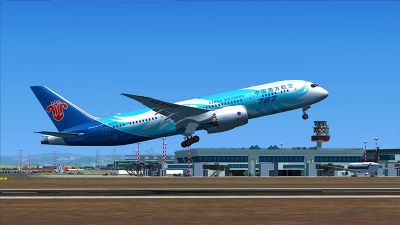
X-Plane 11 vs FSX vs P3D: Which is Better & Why
Choosing between X-Plane 11, FSX, and Prepar3D can feel challenging, as each offers distinctive flight models, detailed cockpit readouts,…

A complete and extensive comparison article between X-Plane 12 and Microsoft Flight Simulator (MSFS) 2020 release. These two behemoths of next-gen simulators are testing the flight sim audience with very different features and functionality. This article aims to help you decide which simulator is best for you based on your flight sim experience and expectations. We have covered pretty much all aspects in this comparison article and we hope you find it insightful and interesting.
As an expert flight simulation enthusiast with decades of experience, I understand the importance of selecting the right flight simulator for one's needs. In this article, I will be comparing the latest releases of two highly popular simulators: X-Plane 12 and Microsoft Flight Simulator. This in-depth analysis will provide insights into various aspects of each simulator, including performance, graphics, aircraft, weather, add-ons, multiplayer, pricing, and more.

This article is lengthy and the jump links below are provided so you may jump quickly to a section you have the most interest in;
Let's dive (or fly) right in!
Let's start immediately with the trailer videos for each sim so you can get a feel for what both companies are putting out there in terms of marketing and appeal.
In this section, we will delve into the performance nuances of two leading flight simulators, with a focus on aspects such as frame rates, resource utilization, and optimization.
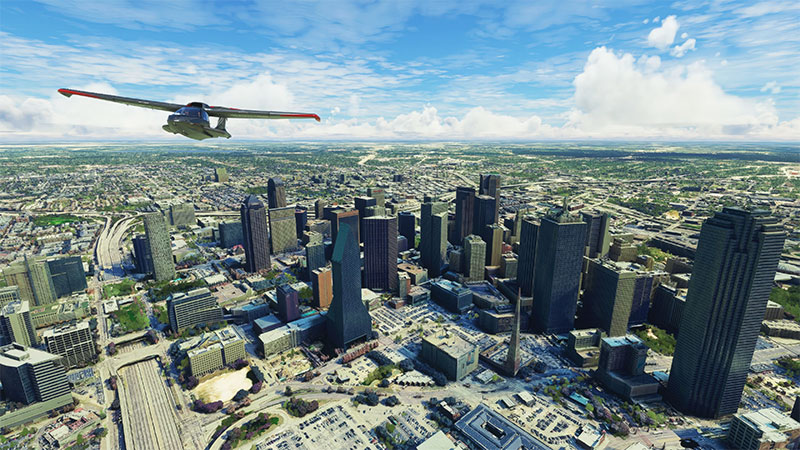
One of the key performance indicators for a flight simulation program is frame rate (FPS - Frames Per Second). A higher FPS translates into smoother graphics and a more seamless flying experience. X-Plane 12 is known for its refined graphics engine, which ensures steady FPS, even in demanding scenarios. This is achieved through a combination of Vulkan and Metal APIs (Application Programming Interfaces), which enhance rendering efficiency and optimize resource utilization.
On the other hand, the latest release from Microsoft features an overhauled graphics engine that leverages DirectX 12 (DX12). This technology allows for more efficient CPU and GPU (Graphics Processing Unit) usage, ensuring that the simulator can deliver stunning visuals while maintaining optimal FPS. Additionally, the simulator takes advantage of Azure AI (Artificial Intelligence) to intelligently optimize the use of system resources in real-time.
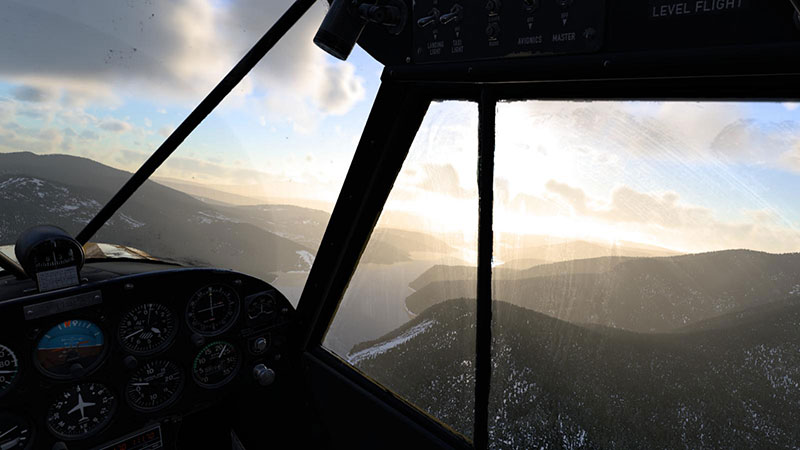
In terms of load times, X-Plane 12 has made significant improvements over its predecessors. Thanks to its advanced LOD (Level of Detail) system, the simulator can now load terrain and scenery data more efficiently, reducing wait times and enhancing the overall experience. Moreover, this simulator has received praise for its ability to manage VRAM (Video Random Access Memory), preventing excessive consumption and ensuring smooth performance.
The rival simulator from Microsoft has also made substantial progress in load times, with data streaming technology enabling the rapid rendering of detailed scenery. This simulator harnesses the power of the cloud to stream terrain and imagery data, which not only speeds up load times but also reduces the demand for local storage.
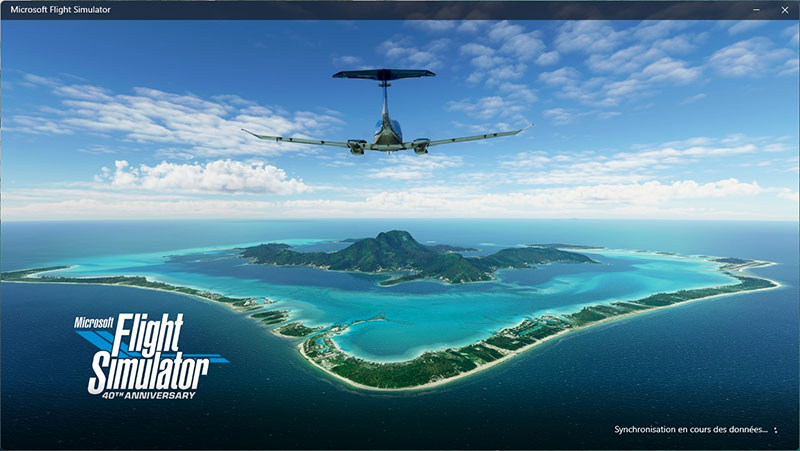
For users with multi-core processors, both simulators have made efforts to optimize performance. X-Plane 12's implementation of Vulkan and Metal APIs enables better distribution of tasks across multiple cores, resulting in more efficient CPU utilization. Similarly, the Microsoft contender's use of DX12 also promotes enhanced multi-core performance, allowing for more sophisticated simulations without straining system resources.
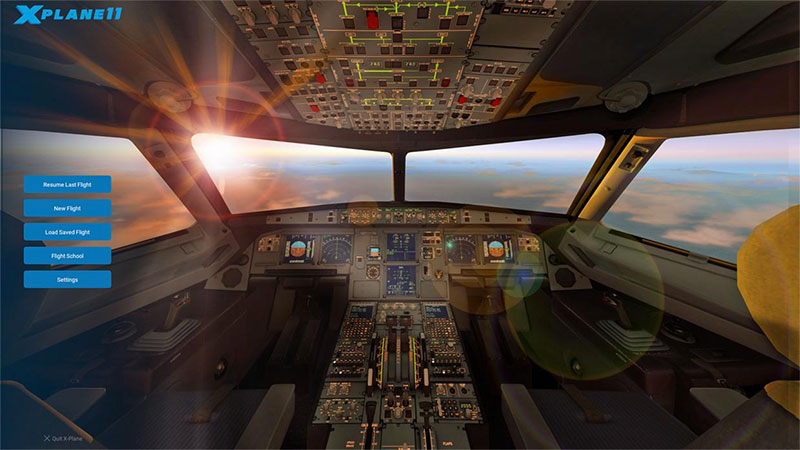
In summary, both simulators have taken significant strides to enhance performance. X-Plane 12's utilization of Vulkan and Metal APIs, along with its advanced LOD system, delivers a smooth and immersive experience. Meanwhile, the Microsoft simulator's adoption of DX12 and Azure AI ensures optimal frame rates and efficient resource management. Ultimately, the choice between these two simulators depends on individual preferences and system capabilities, as both offer a high-performance flight simulation experience.
The graphical fidelity and immersive environments offered by flight simulators are key factors that contribute to their success and appeal. In this section, we will delve into the captivating world of graphics and scenery as presented by two premier flight simulators, X-Plane 12 and the new Microsoft Flight Simulator release.

Starting with X-Plane 12, the simulator boasts an impressive rendering engine (the software responsible for displaying the 3D models and textures). This engine utilizes Vulkan API (an open standard 3D graphics and compute API) to improve performance and reduce stutters. The global scenery in X-Plane 12 is based on OpenStreetMap data, which allows for an accurate representation of the Earth's surface, including roads, buildings, and natural features.
The visual fidelity of this simulator is further enhanced by the implementation of Physically Based Rendering (PBR), a technique that simulates the interaction of light with material properties. The PBR results in realistic reflections, shading, and materials, providing an impressive level of detail to the aircraft and the environment.
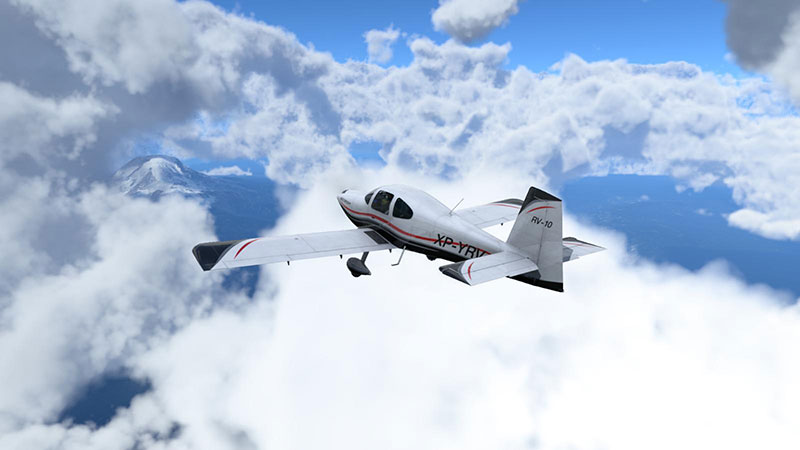
In contrast, the new Microsoft Flight Simulator utilizes the Asobo Engine, which is specifically designed for this title. This engine employs DirectX 12 (a collection of application programming interfaces for handling multimedia tasks) to achieve high performance and stunning visuals.
One of the standout features of the Microsoft Flight Simulator is its integration with Bing Maps, allowing the simulator to render a highly detailed and accurate representation of the world, complete with photorealistic ground textures and 3D models of buildings and terrain. Additionally, this simulator leverages Azure AI (cloud-based artificial intelligence) to process and render accurate real-time weather data and atmospheric effects, creating an unparalleled level of immersion.
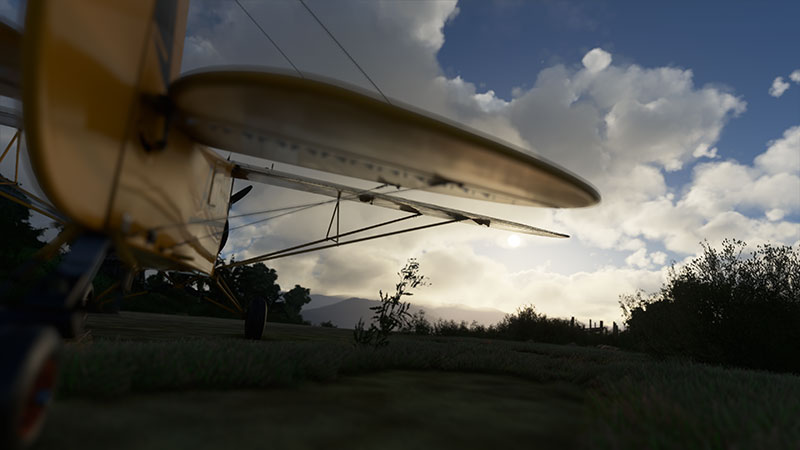
Both simulators excel in their respective domains. While X-Plane 12 showcases outstanding accuracy in its global scenery and employs Vulkan API for optimal performance, the new Microsoft Flight Simulator sets a new benchmark for visual realism with its cutting-edge Asobo Engine and Azure AI integration.
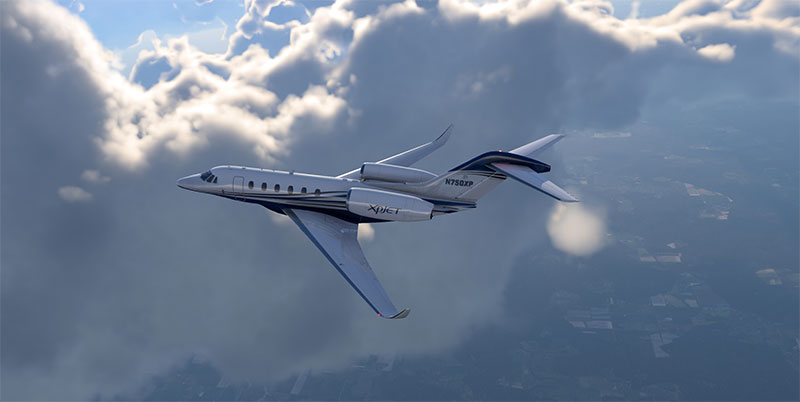
In summary, when comparing the graphics and scenery of these two leading flight simulators, it is evident that each offers unique strengths. X-Plane 12's OpenStreetMap-based scenery and PBR provide a high level of detail, while the new Microsoft Flight Simulator's integration with Bing Maps and Azure AI create an unmatched, immersive experience. Ultimately, the choice between these two simulators will depend on individual preferences and priorities.
In this section, we will delve into the out-of-the-box aircraft offerings provided by the two prominent simulators, examining the intricacies of their default fleets. Avid flight sim enthusiasts understand that a high-quality aircraft lineup is essential for an immersive and authentic experience.
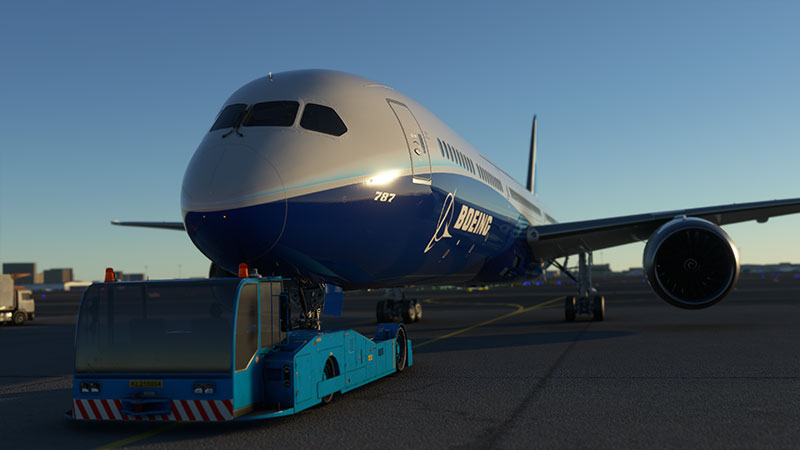
X-Plane 12 offers a comprehensive selection of default aircraft, ranging from General Aviation (GA) aircraft to high-performance commercial jets. GA aircraft are smaller, private planes used for personal, recreational, or business purposes, while commercial jets are larger, airline-operated aircraft for passenger and cargo transport. X-Plane 12's default lineup includes noteworthy models such as the Cessna 172 Skyhawk (a popular GA aircraft), the Boeing 737-800 (a widely used short-to-medium-range commercial jet), and the Airbus A320 (a modern narrow-body airliner). Additionally, the software boasts several specialized aircraft, including the Sikorsky S-76 (a medium-sized, multi-purpose helicopter), and the Space Shuttle Orbiter (a retired spacecraft for educational purposes).
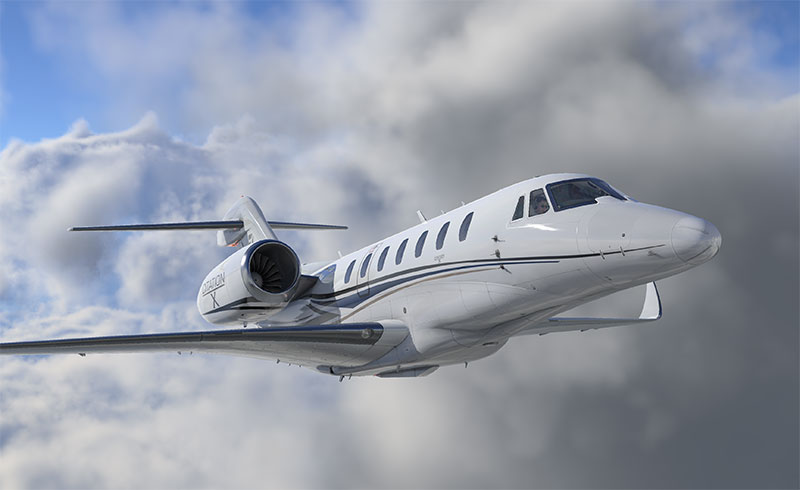
The latest Microsoft Flight Simulator release presents an equally impressive default aircraft collection. It features the likes of the Diamond DA40 (a single-engine, four-seat GA aircraft), the Beechcraft King Air 350i (a twin-turboprop utility airplane), and the Airbus A320neo (an advanced variant of the A320 family). The simulator also provides users with access to the Boeing 747-8 Intercontinental (a long-range, wide-body commercial jet) and the Icon A5 (an amphibious Light Sport Aircraft, or LSA, designed for leisure flying). An LSA is a small, easy-to-fly aircraft with simple systems and lower operating costs.

While both simulators provide a diverse range of aircraft, the new Microsoft Flight Simulator release focuses more on the visual aspects and cutting-edge technologies incorporated into the default aircraft. These improvements offer higher fidelity visuals and increased realism. In contrast, X-Plane 12 maintains its reputation for accurate flight dynamics (the forces acting on an aircraft during flight) and emphasizes the overall flight experience, with a strong focus on system depth (the complexity and realism of aircraft systems) and aerodynamic modeling.
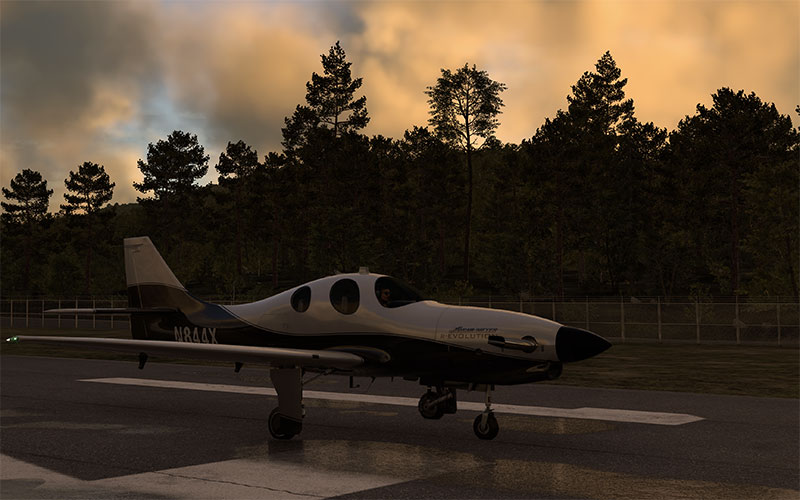
To sum up, the default aircraft offerings in both simulators cater to a wide array of preferences and flying styles. X-Plane 12's lineup excels in accurate flight dynamics and system depth, while the new Microsoft Flight Simulator release emphasizes visual fidelity and advanced technologies. Ultimately, the choice between these two simulators depends on the user's priorities and desired simulation experience.
In the realm of flight simulation, weather and atmospherics play a pivotal role in creating an immersive and realistic experience. This section delves into the intricacies of meteorological conditions and atmospheric phenomena in two leading flight simulators: X-Plane 12 and the latest Microsoft Flight Simulator release.

Starting with X-Plane 12, its weather engine (a system responsible for generating and simulating weather) has seen significant enhancements. The simulator now boasts improved cloud representation, leveraging volumetric cloud rendering techniques. This approach allows for visually stunning and dynamic cloudscapes that react realistically to lighting conditions, resulting in dramatic sunsets and striking cloud shadows on the terrain below.
Furthermore, X-Plane 12's weather engine incorporates sophisticated modeling of turbulence and thermals. Users will experience the effects of updrafts and downdrafts (vertical air movements) in the vicinity of mountains, convective activity, and other meteorological phenomena. These elements contribute to a more engaging and challenging flying experience.
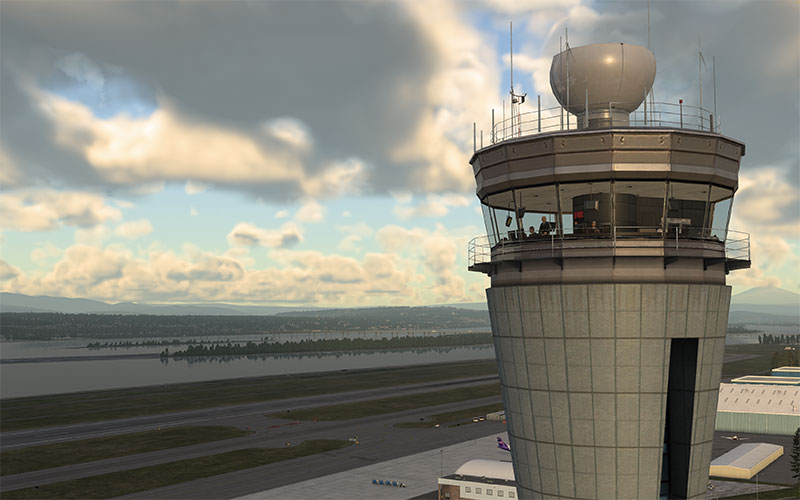
Additionally, this simulator accurately simulates precipitation and its impact on aircraft performance, such as reduced visibility, wet runways, and the need for de-icing procedures. The weather system also takes into account the influence of air masses and frontal systems, providing users with realistic weather transitions during long-haul flights.
Turning to the latest Microsoft Flight Simulator release, its weather and atmospheric capabilities have been greatly refined as well. A standout feature is the integration of real-world weather data, enabling users to experience up-to-date meteorological conditions in their simulated environment. This real-time synchronization allows for an unparalleled level of immersion.

The simulator's weather engine also utilizes advanced algorithms to generate stunning and accurate cloud formations. Employing the power of procedural generation, it creates diverse and evolving cloudscapes, which exhibit realistic behavior and movement.
Moreover, the Microsoft Flight Simulator release showcases an exceptional level of environmental detail. Users will notice distinct atmospheric layers, including haze and fog, which not only enhance the visuals but also affect aircraft performance and flight planning. Additionally, the simulator's advanced aerodynamics modeling ensures that aircraft respond accurately to changing weather conditions, such as wind shear and turbulence.
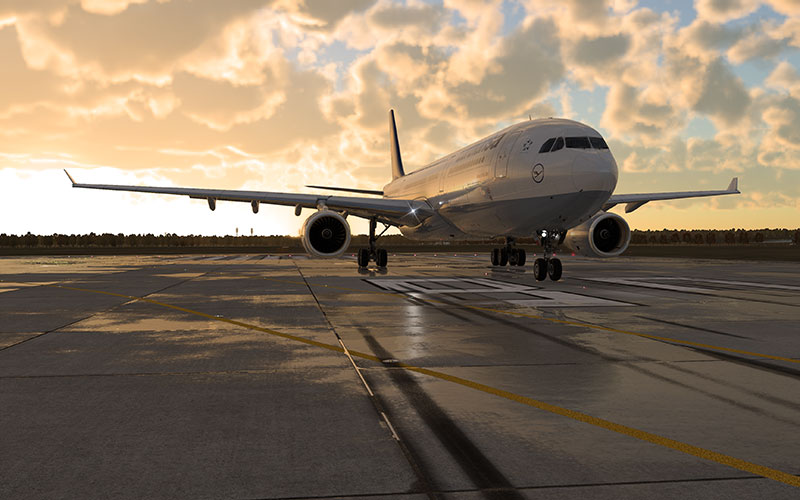
In conclusion, both X-Plane 12 and the latest Microsoft Flight Simulator release have made impressive strides in the realm of weather and atmospherics. Each simulator offers a unique set of features, catering to different preferences and priorities. With their advanced weather engines, volumetric cloud rendering, and realistic environmental effects, users are poised to enjoy a truly immersive and authentic flying experience.
Flight simulation enthusiasts are always on the lookout for new experiences and additional content to enhance their virtual skies. In this section, we shall delve into the realm of add-ons, modifications, and customization options available for the two leading simulators in the market.
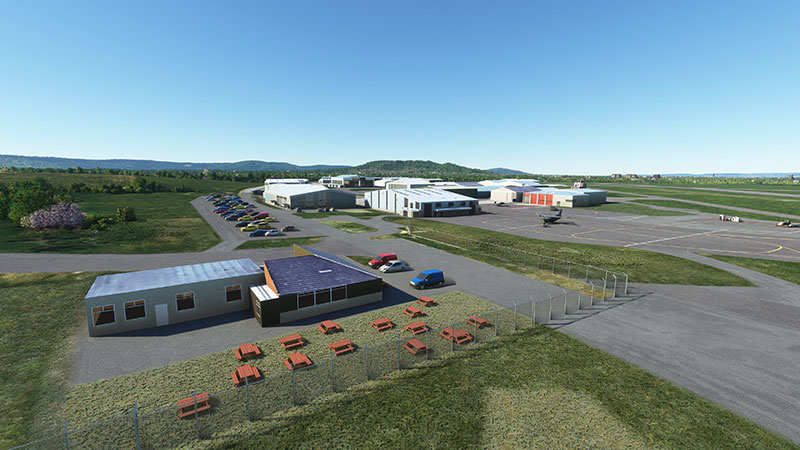
When it comes to user-generated content, both platforms offer a plethora of options, ranging from freeware (community-developed content that is free to download and use) to payware (professionally developed content requiring purchase). The scope and quality of these modifications can vary, but let's dive into the details to compare the offerings.
In terms of payware add-ons, the latest Microsoft offering boasts a thriving marketplace with numerous high-quality aircraft, airports, scenery packs, and utilities available for purchase. These add-ons are typically developed by well-known companies in the flight simulation world, such as PMDG (Precision Manuals Development Group), Orbx, and Aerosoft. The simulator's SDK (Software Development Kit) allows developers to create stunningly realistic aircraft models and scenery enhancements, with features like PBR (Physically Based Rendering) and detailed weather simulation.
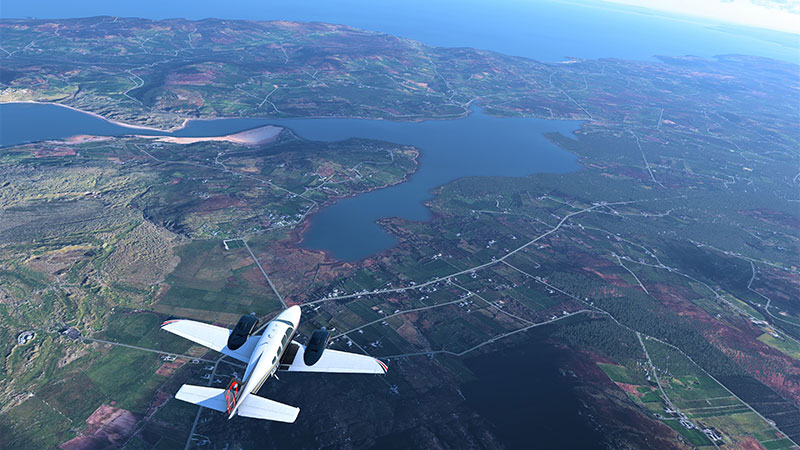
On the other hand, X-Plane 12 has an equally extensive library of payware products, often praised for their exceptional level of detail and realism. Laminar Research, the developer behind X-Plane, has a strong focus on supporting third-party developers, resulting in a wide range of high-quality add-ons covering aircraft, airports, and even global scenery enhancements like orthophotos (satellite imagery for the ground textures). The flexibility of the platform's underlying engine, coupled with its native support for VR (Virtual Reality) devices, allows developers to create truly immersive experiences.
Freeware modifications are abundant for both simulators, thanks to the dedication and creativity of their respective communities. Microsoft's simulator has an active freeware scene, with countless options for users to download and enhance their experience without spending a dime. This includes aircraft, airports, liveries (custom aircraft paint schemes), and even custom weather settings. The sim also benefits from the integration of Bing Maps data and Azure AI, enabling the generation of realistic and accurate landscapes in many regions.

X-Plane 12's freeware offerings are no less impressive, with a vast array of user-generated content accessible through various online repositories like the Fly Away Simulation website. The community has developed a wide range of aircraft, scenery, plugins, and utilities to customize the simulation experience to their preferences. One notable example is the use of custom mesh (a 3D model defining the terrain's shape) to improve the accuracy of the landscape.
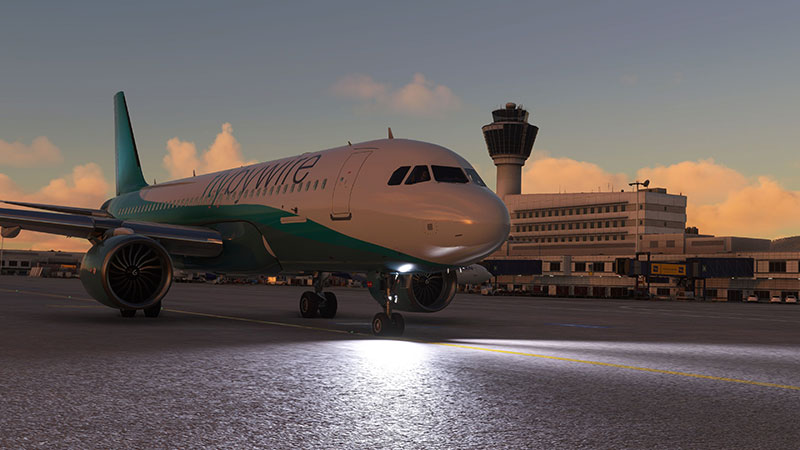
In conclusion, both simulators offer an abundance of add-ons, mods, and customization options, catering to users with varying preferences and budgets. The thriving payware and freeware ecosystems for both platforms ensure that there is always new content available, making it an exciting time to be a flight simulation enthusiast. As a user, the choice ultimately boils down to personal preferences, and with the wealth of options available, you're sure to find the perfect add-ons and mods to enhance your virtual aviation adventures.
You can find all of the freeware sections for both Microsoft Flight Simulator and X-Plane 12 on Fly Away Simulation. We are building up the sections daily with many new freeware mod releases from a plethora of new developers. Please use the links below to jump straight to them;
When comparing the multiplayer and online capabilities of these two renowned simulators, it's essential to delve into the intricacies of their respective offerings. Both platforms boast impressive features that cater to the diverse needs of flight simulation enthusiasts.

In the realm of multiplayer functionality, the latest iteration of Microsoft's iconic simulator (MSFS) has elevated the experience by incorporating real-time air traffic and live weather integration. This implementation enables simmers to share the virtual skies with other pilots, fostering a truly immersive atmosphere. The built-in VATSIM (Virtual Air Traffic Simulation Network) support further augments the authenticity, allowing users to participate in a network of professional and hobbyist air traffic controllers.
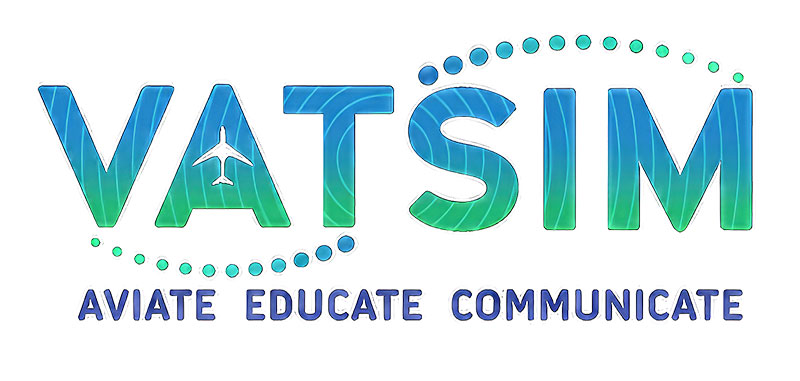
Conversely, X-Plane 12 (XP12) offers a more modular approach, relying on third-party plugins such as PilotEdge and IVAO (International Virtual Aviation Organisation) to facilitate online interactions. While this might require extra steps to set up, the advantage lies in the flexibility to tailor one's multiplayer experience according to personal preferences. XP12 also features native support for Shared Cockpit, enabling two pilots to cooperate in real-time, controlling the same aircraft for a cooperative flight experience.
In terms of modifications, both simulators have vast libraries of community-generated content. MSFS, with its expanding marketplace, offers a mix of free and premium addons, including aircraft, airports, and scenery. The sim's Software Development Kit (SDK) has attracted developers and enthusiasts to create visually stunning and accurate renditions of real-world locations.
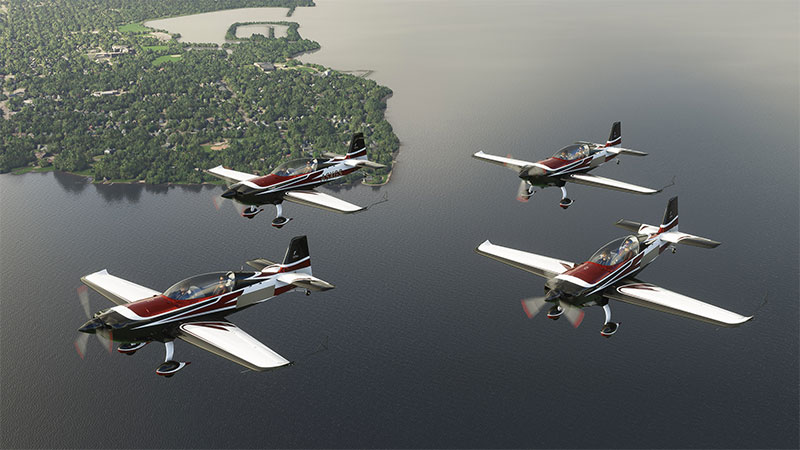
XP12, on the other hand, has a longstanding history of embracing freeware and payware modifications. Loyal fans have contributed countless aircraft, airports, and scenery packages to the XP12 ecosystem, with the likes of Ortho4XP (a tool that generates high-quality satellite imagery-based terrain) and xEnviro (an advanced weather engine) exemplifying the community's ingenuity.
To summarize, while MSFS excels in providing an out-of-the-box multiplayer experience and a growing marketplace, XP12's strength lies in its adaptability, with third-party plugins catering to various online preferences and a rich library of community-created content. Both simulators offer unique and engaging multiplayer and online features, leaving the ultimate choice to individual tastes and requirements.
As the landscape of flight simulation continues to evolve, one can anticipate further enhancements and refinements in the online capabilities of both MSFS and XP12, ensuring that virtual pilots remain immersed and engaged in their passion for aviation.
Pricing is an important consideration for many users when selecting a flight simulator. Microsoft Flight Simulator offers a tiered pricing structure, with three editions available: Standard, Deluxe, and Premium Deluxe. The Standard edition starts at $59.99, while the Premium Deluxe edition, which includes additional aircraft and airports, is priced at $119.99.
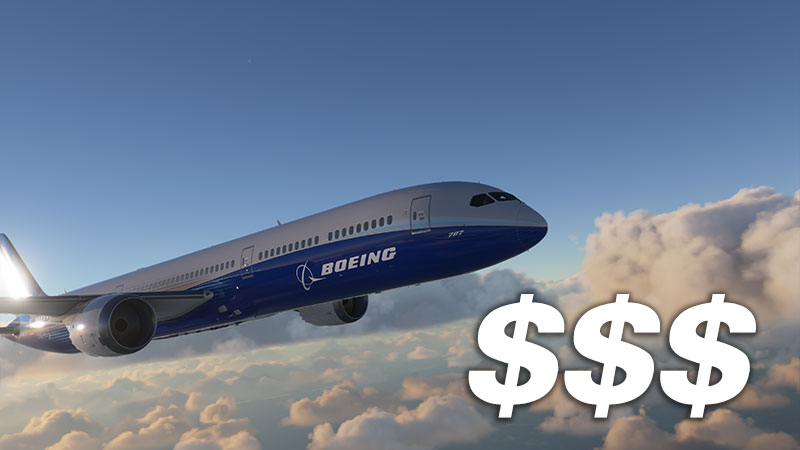
X-Plane 12's pricing is more straightforward, with a single edition available for purchase at $79.99. This provides users with access to the full range of features and content, without the need for additional upgrades.
Here is a short bulleted summary of the pros and cons of each simulator, highlighting their strengths and weaknesses:
In conclusion, both X-Plane 12 and Microsoft Flight Simulator offer unique strengths and cater to different user preferences. X-Plane 12 excels in performance, accurate flight dynamics, and systems modeling, while Microsoft Flight Simulator shines in the areas of graphics, scenery, and weather simulation. Ultimately, the choice between the two simulators will depend on individual priorities and the desired level of realism and immersion in the flight simulation experience.
In this section, we bring you a visual treat that showcases the unique features and capabilities of X-Plane 12 and the new Microsoft Flight Simulator. To give you a better understanding of their performance and differences, we have curated four insightful videos from YouTube. Let's dive into the world of flight simulation and explore the advancements that these simulators have to offer.
This video presents an in-depth analysis of the graphics and scenery of both simulators, highlighting their differences and similarities. From dynamic weather systems to ground textures, the creator demonstrates the graphical fidelity and level of detail present in each simulator, enabling you to fully appreciate the visual experience each platform offers.
Dive into the world of flight dynamics as this video compares the realism and accuracy of aircraft handling and aerodynamics in both simulators. The creator expertly evaluates factors such as lift, drag, and thrust (the forces acting on an aircraft during flight) and explains the intricacies of the flight models used in both platforms.
Experience the power of mother nature in this comprehensive comparison of weather and atmospheric conditions in each simulator. This video showcases the weather engines, cloud formations, and atmospheric phenomena in both platforms, emphasizing the impact of these features on the overall flying experience.
For those interested in the technical side of things, this video explores the performance and system requirements of both simulators. The creator delves into hardware compatibility, optimization, and resource usage, providing valuable insights for users looking to get the best possible experience from their flight simulation setup.
We hope these video comparisons offer valuable insights into the world of X-Plane 12 and the Microsoft Flight Simulator, allowing you to make an informed decision on which platform suits your flight simulation needs best. So grab your flight stick and prepare for takeoff!
As we reach the end of this in-depth comparative analysis between these two cutting-edge flight simulation platforms, we would greatly appreciate your insightful contributions. We encourage our fellow aviation enthusiasts and simulation experts to enrich the conversation by sharing their personal experiences with both platforms in the comments section below.

We understand that, as skilled virtual pilots, you have keen eyes for detail and, therefore, unique perspectives on various aspects of flight simulation, such as visual rendering (the graphical representation of the virtual environment), flight dynamics (the accuracy of simulated aircraft behavior), and ATC interactions (communication with simulated air traffic control).
We're eager to learn more about your thoughts on how the simulators handle weather simulation (the portrayal of meteorological phenomena) and the implementation of real-world nav data (navigation information based on actual aviation data sources). Your input on the SDKs (Software Development Kits) provided for add-on creators and the ease of integration with third-party software will also be immensely valuable to our community.
Please share your views on the realism of the virtual cockpit (the 3D representation of the aircraft's flight deck), avionics functionality (the operation of electronic systems), and the overall performance (frame rates and smoothness) you've experienced with each simulator.
So, dear flight sim aficionados, we invite you to join the discussion and let us know your thoughts on the pros and cons of these two remarkable simulators. The Fly Away Simulation community thrives on your collective wisdom, and your participation will help fellow pilots make more informed choices as they navigate the ever-evolving landscape of flight simulation.
Thank you for your ongoing support, and we look forward to hearing your invaluable feedback! Safe skies and happy landings!
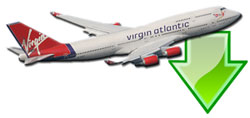 Don't forget... We have a huge selection (over 24,000 files) of free mods and add-ons for MSFS, FSX, P3D & X-Plane in the file library. Files include aircraft, scenery, and utilities All are free-to-download and use - you don't even need to register. Browse on down to the file library here.
Don't forget... We have a huge selection (over 24,000 files) of free mods and add-ons for MSFS, FSX, P3D & X-Plane in the file library. Files include aircraft, scenery, and utilities All are free-to-download and use - you don't even need to register. Browse on down to the file library here.
32 comments
Leave a ResponseThe content of the comments below are entirely the opinions of the individual posting the comment and do not always reflect the views of Fly Away Simulation. We moderate all comments manually before they are approved.
Flight Simulator was always the more reliable platform. It was easier to understand better flight games. The only thing now is to bring back the production of additional games.
I’ve been simming since FS4 and had nearly all the MS versions up to FSX and XP7, 9,10,11, and now 12. I’m also a real-world GA pilot. For me, the visual realism that MSFS seems to offer takes a back seat to real-world flight performance and systems realism. I’ve also utilized Air Manager building 2 15” touchscreens and a 33” primary display. The advantages of XP12 and ease of use with multi screens are other reasons I’ll stick to XP12. Although I’m tempted to dip my toe and try the eye candy of MSFS.
While the detail of the article is in-depth, the conclusions drawn on every topic tread the water as shallow as ever so possible so as not to offend the slightest of sensibilities. Yes, thank you for permitting us to draw our own conclusions repeatedly. Further, labeling MSFS as "new" and "latest" over and over is cliché at best and tired at most. There is only one MSFS and it's pushing three years old now.
I like Xplane 12 because of the realistic qualities of the cockpit. I do own msfs 2020 and papar3D.
For the price, every flight simulator enthusiast should own both, they both have advantages, depending on what you need from a flight simulator. Big applause to the developers who spend most of their time making these great products for us!
Own both, Purchased beta XP-12 at the first release. The development/beta time to market seemed to me to be spot on. Many users reported issues with XP in beta, I had some, but not many. Updates to XP come out about every two weeks or so, which to me is excellent, Johnny is on the spot to fix things. ATC in both is not good, and it took MSFS over a year to get the syntax of words correctly.
MSFS takes a whole bunch of heavy-duty hardware to run smoothly for me. I had TOL laptop when it came out, now I have to roll back settings to medium or less for the game to run. You could not (for me-25 years in FS-trained to fly by real-world MD-11 captain for DAL) up until SU-05 plan and get the ILS system in the 747 to operate correctly. To date the BA-787 to me still does not fly correctly, so I have given up on it. PMDG-737-700; DC Designs F-14A-B; and soon the C-17 round out my preferred airplanes. I also will buy the PMDG 747QOTS when released. If I had to give one up, it would be MSFS, as it just takes so much tweaking to get it to work as "real as it gets", whereas I can have from install to flying XP setup in as little as 30 minutes, which includes my Virpil Controls (VFX Grip/Throttle unit and ACE Rudder pedals) XP is just quicker and easier. In comparison in winter at my home, XP had the trees and outside set correctly, in MSFS it was summer all the time. I have some RW weather on, in both, cannot tell you which one is better.
I can port over lots of my XP-11/10 planes with a bit of tweaking, but not so in MSFS, all the previous FSX planes do not work in MSFS, and it was designed that way. Bad marketing, XP to me is just easier and a better sim to set up and fly in. Because I fly Big Iron, down and low is not important to me, correct technical qualities of the planes are, the FMS in XP12 is not the current model in real-world operation aircraft, so MSFS has that one for now.
Technical Support in XP is just outstanding, and I mean that from a personal point of view. Right after the beta started, I posted a question on porting over 10/11 AC's and Austin commented to me directly. It's almost impossible to get MS or even Asobo to comment on questions, and aside from a direct bug report, you have no direct way to talk to any of the developers. I personally believe, XP team has more real pilots on it than MSFS does. I still use FSX, even though it's clunky, but I have my favorite plane which works in it until DC Designs releases their C-17. Thank you for taking my comments.
Missing in this comparison is the most important part of flying: Airplane handling with the key commands. My FS experience is going back to 1989 and I am shocked to see the differences between FSX and MSFS in respect of keyboard handling and setup features, as well as the concept of all the so-called POI.
You can stop the plane in the air for having a better look at the Eifel Tower!! No plane in the world (except heli's and harriers) can stop in the air. Pure 'arcade' stuff. If I want to see the Eifel Tower, then I go to the websites and find all details you can wish for. These POI points are popping up on every screen and panel, why? Already mentioned the keyboard use; How can you operate 3 keys at the same time, when having one hand already on the joystick? Not listed in this comparison.
The comparison is mentioning the subject of included airplanes; Yes, you may have too many variants in GA planes and with only a very few analog panels. Popular planes from previous FS's are so far only available in payware! In short: Yes, this review is highlighting in a very clear way the various differences between the two, but it is f,i, lacking the basic use of controlling a certain plane in both simulators. (For your info: I don't have any X-plane experience; Only FS) rgds.
Having used MSFS since it was first released, my gaming laptop manages to run it really well considering it’s a very needy program. I’ve always used X-plane 11 and then bought X-plane 12 out of curiosity.
I have had very little pleasure out of X-plane 12 as I am constantly trying to adjust the settings to have it run as I would like. I am also extremely disappointed with all my X-plane 11 addons I’ve accumulated over the years not being compatible with X-plane 12 unless I buy the product again or pay for the updated version.
I generally now default to MSFS as to me I am never disappointed with how it runs, and looks and the endless supply of quality freeware and market add-ons available. To me, it’s the best thing that’s ever happened for flight simmers.
MSFS is beautiful, with all the colors and gadgets. But I like more of the X-Plane 12 more, even though the graphics are more realistic than with the Microsofts simulator. And the flying itself is at a whole other level in X-Plane than in the MSFS 2020.
If you just want to see the landscape and nice vanilla graphics go for Microsoft. If you are interested in flying and a simulator, not a game, the X-Plane is your choice.
I commend the release and description of all features of both Fsx Editon and FSMFS (2020). I still think that there is a lack of Brazilian representation, both of scenarios and/or airports and of aircraft, especially Embraer civilian ones - everything, of course, referring to Brazilian products. My little experience dates back to 1980 - I'm 70 years old, and I'm an admirer of FSX. Of course, I have some difficulties with the new 2020 model, but I'm trying to adapt. I expect something in the future to fill that gap. It is a great tool for my retirement. Yours sincerely.
I have had all the simulators from the beginning, both from Flight Simulator and from X-plane. Right now MSFS 2020 in VR is great, X-plane12 doesn't work well for me in VR and has a lot of performance issues unlike MSFS 2020. I have a high-performance PC and X-Plane 12 doesn't work well, it's a slight improvement from X-Plane11.
I still run the old version, the new one while really nice requires too much to even get started.
I like the old version running PMDG 737 the new stuff has way too much stuff that is not organized in any kind of good organization. I don't want to have to read an entire book about something that should be a take-off on what exists not a whole new version of how to fly a 737 for example.
I am sure real pilots who have flown for years do not have to re-read the entire flight manual for the same aircraft or procedures to land and take off etc each time they change companies so while I have the new copy I have not flown it except once.
Not interested in this comparison since I do not and never have flown XPlane so the comparisons are of no use to me and I cannot validate them in any way.
I have used FSX for at least two decades and then switched to fs2020. The graphics with fs 2020 have certainly improved but: the ATC compared to FSX has worsened, during the flight the assistance is decidedly poor if not useless.
It makes no sense if you fly at 35,000 feet to show you a monument, you can't dive..... During the updates, which are often several gigabytes, the system frequently crashes. Then there are various bugs that have not yet been fixed.
Finally saving flights: if you save as .flt, the flight is saved in the point you chose but when you reload the flight your flight plan has disappeared, if you save the flight as .flp when you reload you start from where you saved the first time. Thank you.
My system is a bit long in the tooth: i5-6600k+GTX1060+16GB with flight sims installed on SSD. and I'm delighted with the performance, getting a smooth 30FPS over most places. It's great to have a flight sim that runs on what we have now rather than some hypothetical yet-to-be-built system, as with FSX. My graphics quality settings have to be middling-ish, of course, but it still looks brilliant. The WBSims 172 and BlackSquare Bonanza, Baron, and King Air give some serious systems depth to those GA aircraft, and with PMDG, Majestic, and Leonardo, it's possible to do some real *cough* study level *cough* flying in MSFS.
I'm also running XP11 for some of the excellent aircraft available there, particularly AirfoilLabs C172 and B350, and also some Carenado aircraft with some depth added by SimCoders, which gives them an A2A-type upgrade. I'll probably upgrade to XP12 at some point but there's no rush. Let others get the early-adoption growing pains out of the way. ;-)
I purchased micro sim for 70 dollars then I was told I had to pay 11 dollars per month I refused and they shut it off this is a scam when purchased xplane 12 I am enjoying this game.
MSFS is now my favorite flight simulator, especially with my new GE Force GPU 4070 ti.
Commercial certificate for 45 years as a ferry pilot. I have owned Microsoft since day 1 and currently using MS2020 and XP12. MS2020 for sightseeing the world and XP12 for serious piloting. Both excel for my needs and enjoyment. Thanks to the many individuals developing and maintaining both programs. "Don't forget to lower the landing gear" Rick.
For world scenery, you can't beat MFS0202 except mainly for one thing: watering rending, where everything appears as a GLASS SMOOTH pond, including oceans. Cloud reflections give the impression of flying through two identical cloud layers inverted from each other. Makes me feel like I'm watching the final scenes of 2001: A Space Odyssey. FSX water shows moving waves, shoreline surf, and blurred cloud reflections.
Most folks are happily flying airliners and civilian aircraft. I prefer military aircraft in which every button and switch works, especially for bomb dropping and missile launching. Having been a Marine pilot, I LIKE the challenge of learning how to do this in real life.
My favorite in FSX is the VRS F/A-18E Superbug X. I expect that much performance reality in ALL aircraft. I should add once I land, the flight is OVER. (After all, it is a FLIGHT sim.) I don't need super-detailed airports where everything moves. Pretty, but it degrades frame rates too much. (After all, I wanna 'play pilot', not 'baggage handler'.)
I don't mind flying two different sims: MSFS2020 for sightseeing, and FSX for much more realistic flight dynamics. But until the MSFS2020 water reflection problem is fixed, I'll stick with FSX even for that. I'd probably be much more pleased with MSFS2020 in another 5 or 8 years, but it's very likely I'll be dead by then.
In ANY case, it's great that we've got flight sims that suit everyone's fantasy in one way or another. We've certainly come a long way since the flight sims of the 1980s, haven't we? Keep flying and enjoying.
Only use x-plane 12 for the authenticity of airports otherwise a poor program FS20/20 tried but has poor flexibility between functions and is generally annoying. Run a flying class for seniors using FSX where flying is fairly authentic with a reset function to save time Am a retired pilot who built and flew a Skyranger Kit plane.
Great job at remaining neutral and positive. I was an XP fanboy but while waiting for XP12 spent the wait exploring MSFS. There was a lot to like but many warts. Each release has continued to eliminate these ones by one. If Microsobo, with its virtually unlimited resources, remains committed to this project long-term there is no way tiny Laminar Research can compete.
But MS has lost interest in Flight Sims once before and I never underestimate Austin’s ability to pull a rabbit out of his hat. I choose to support and use both sims because competition makes everyone better.
Generally, MSFS 2020 works well on my system
11th Gen Intel(R) Core(TM) i7-11800H @ 2.30GHz 2.30 GHz 16 GB RAM, NVIDIA RTX GE Force
However, some features are unreliable, such as Flight recording (Windows+Alt+R) works sometimes, sometimes not - The GPS is not very useful, particularly for aligning oneself with the runway when landing. The GPS for FX10 was much better - installing 3rd party planes or sceneries is problematic, at least on the Steam version of the game.
Very concise article, appreciate the time you took to write this article.
Hello, I have a PC-OMEN 870-152 nf (gaming) Intel(R) Core(TM) i5-6400CPU @ 2.70GHz .71 GHz RAM 8 Go FS X will not run, FS 2004 will not run ... but FS 2002 it runs. Windows say it will not run because I have also Windows 11, but give never a result to repair... What can We do about it? Yours truly.
How are you supposed to compare the two programs if you haven't bought and installed X-Plane?
I'm totally in favor of X-Plane. I had MSFS and as a simmer, a major key is flying the aircraft and feeling connected to the controls in MSFS it feels like power steering vs in X-Plane it feels direct and not to mention controlling the views in MSFS is a big hassle and not steady it always shakes a little.
When I could finally afford it, I purchased the HP Reveb G2 VR headset and then purchased the deluxe version of MSFS 2020. It was okay, but I needed to upgrade my system.
I installed an ASUSTek TUF Gaming x570-PRO motherboard, an Nvidia Geforce RTX 3060 Elite with 12 GB of memory, and upgraded my system memory to 128 Gb, running with an EVGA 850 CG power supply. Really can't complain about how MSFS 2020 works. I love it.
Before this, I was a HUGE X-Plane fan having purchased the original version directly from Austin Meyer at the EAA convention around 1995, and pretty much every X-Plane upgrade to the present XP 11.5. So I was excited when they finally released XP 12. But what a disappointment.
Yes, the trees now look more realistic, but they are everywhere, seeming to be placed willy-nilly. The accuracy of the topography is a joke in my opinion. While you can somewhat recognize cities, that's about it. But the real problem is how badly it runs on my system. On the monitor, it is, well, okay, but in VR the stutter is so bad it makes flying almost impossible. And I really don't have the money to fork out for bigger and better video cards.
After twenty-odd years of Xplane, I am truly disappointed. Needless to say, I am a HUGE fan of MSFS 2020. By the way, I was probably one of the few who purchased the first Microsoft flight sim sold by SubLogic back in the 80s and ran it on a Commodore 64. That was an experience let me tell you. All that wireframe!
I've been flying x-plane for several years, fixed wing and rotor. I tried MSFS 2020 a few months ago and while the scenery is great, it just seems far more complex to operate than is necessary.
I would like to see the ability to assign and store aircraft profiles without the need for an add-on program such as AxisAndOhs. I would also like to see MSFS have the ability to operate multi-monitors as Xplane allows without an addon program. I'd also like to see L.A. scenery without giant stone spikes sticking up everywhere.
If these fixes were available I would likely use MSFS at times, until then I'm an Xplane pilot.
Thanks, Murf.
Very concise article, appreciate the time you took to write this article!
You know a review will be shite when its first comparison point is... trailers! And then it goes on about graphics etc when we are talking about flight SIMS. We don't compare Call of Duty vs Medal of Honor, we compare SIMS. Nevermind the xbox plebe userbase.
Well, MSFS's scenery is impressive but every time I try to start it it will want to update, fail, and I can't fly. X-Plane is reliable, and it runs on Linux. These two last points are much more valuable to me than eye candy.
Some things are not touched upon, and that makes a lot of difference to the realism involved. 1. Air and airport traffic. How do the AI traffic engines perform? Are they providing both aircraft and vehicle ground and air traffic in a realistic manner 2? ATC you gotta have a good ATC system if you're going to be realistic.
I know in the past I have been greatly disappointed in the offerings in these areas from both suppliers. Better than nothing but not by much. Have they also improved to a reasonable level?